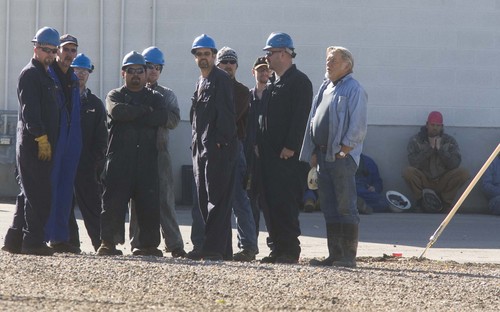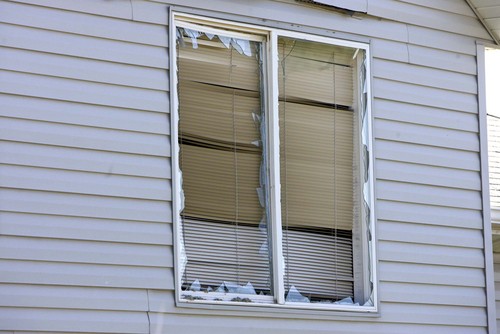This is an archived article that was published on sltrib.com in 2014, and information in the article may be outdated. It is provided only for personal research purposes and may not be reprinted.
Federal investigators blame a huge 2009 explosion at the Silver Eagle Refinery in Woods Cross on corrosion in a pipe that was not inspected for years.
The Nov. 4, 2009, blast "was caused by a rupture in a pipe that had become dangerously thin from corrosion," the U.S. Chemical Safety Board reported Thursday. The "catastrophic failure" of the pipe had been pinpointed as the cause soon after the explosion.
The independent federal agency, charged with investigating industrial chemical accidents, also said the failed pipe "had no record of ever being inspected for corrosion as it thinned over the years."
The agency noted that the blast damaged 100 homes. Two were severely damaged, including one that was knocked off its foundation.
"Fortunately, there were no fatalities resulting from the explosion and it was only by chance that no one was in the immediate area. But many lives were disrupted as residents in Woods Cross … had to move out of homes pending repairs," Rafael Moure-Eraso, chairman of the Chemical Safety Board, said in a statement.
The board does not issue citations or fines but makes safety recommendations to plants, industry organizations and regulatory agencies such as the Environmental Protection Agency.
The catastrophic rupture occurred in a 10-inch pipe. It led to a massive release of hydrogen, which caught fire immediately and exploded.
Moure-Eraso said the findings "are all too familiar: Mechanical integrity programs at refineries repeatedly primarily emphasize inspection strategies rather than the use of inherently safer design."
He added, "This is the same syndrome we found in the Bay Area Chevron fire of 2012 [that sent 15,000 California residents to the hospital for medial attention] and the Tesoro refinery explosion and fire that killed seven in Anacortes, Wash., in 2010."
Dan Tillema, a lead investigator for the agency, said examination of the pipe showed the same type of corrosion "at the Silver Eagle Refinery that we found in the Chevron accident. Sulfur compounds in the process stream corroded a steel piping segment, causing the pipe wall to become severely thin."
He added, "This incident is also similar to Chevron in that, while sulfidation is a well-known damage mechanism at refineries that requires regular inspection and monitoring, the segment that failed has no record of ever being inspected."
Silver Eagle Refining sued four companies in 2012, alleging their negligence and breaches of contract led to the explosion — including failing to inspect the pipe.
In November, U.S. District Court Judge David Nuffer dismissed Silver Eagle's negligence and strict liability claim against Sun Shipbuilding and Dry Dock Co., which manufactured the pipe segment. He found the allegations were filed past the legal deadline, or statute of limitations, of two years for manufacturing claims.
Claims against Professional Services, a suburban Chicago engineering consulting and testing company, Sun Oil Co. and Moose's Construction remain pending.
Moure-Eraso said his agency's inspection into Silver Eagle's 2009 explosion was delayed "due to, ironically, a pressing series of accidents in the oil production and refining sector."
He said, however, "I want people to know that work has been continuing as this report shows, and the CSB is working hard to ensure refineries and indeed all chemical operations are operated more safely."
In 2010, the Utah Occupational Safety and Health Division fined Silver Eagle nearly $1 million. The division's investigation of the explosion pinpointed 71 violations of state law that singled out problems with equipment, safety procedures and record keeping. Sixteen violations were deemed "willful." Another 55 were said to be "serious."













